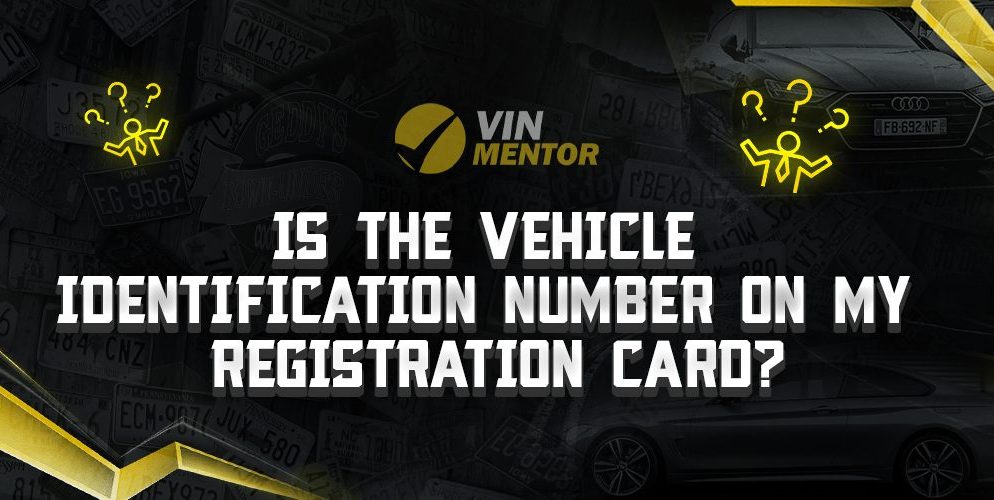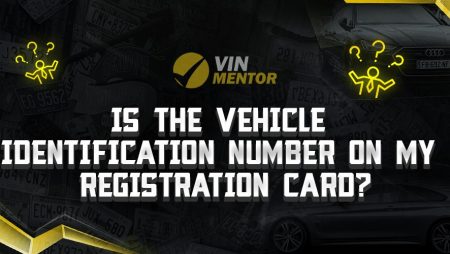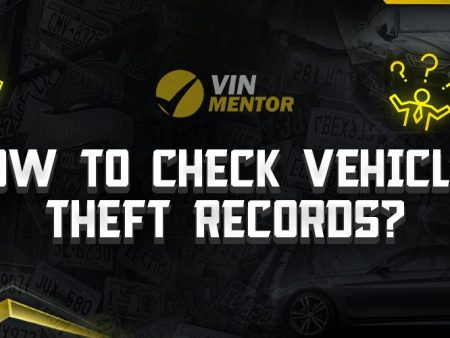

Have you ever wondered whether the Vehicle Identification Number (VIN) is listed on your registration card? The answer may not be as straightforward as you think. If you’re curious to know the answer, read on.
Key Takeaways
- The VIN is a unique code assigned to every vehicle that provides information about its make, model, and year of manufacture.
- The registration card provides important information about your vehicle, such as its owner, registration expiration date, and license plate number.
- The VIN is typically found in several locations on a vehicle, including on the dashboard, engine block, and door jamb.
- While the VIN may not be listed directly on the registration card, it is still important to keep the VIN handy for vehicle identification and registration purposes.
What is a Vehicle Identification Number?
A Vehicle Identification Number (VIN) is a unique code assigned to every vehicle that provides important information about its make, model, and year of manufacture. The VIN is made up of 17 characters that are a combination of letters and numbers.
The VIN is an essential tool for identifying and registering vehicles. It can be used to track a vehicle’s history, such as its ownership and accident history. The VIN is also used by law enforcement agencies to identify stolen vehicles.
Where is the VIN Located on a Vehicle?
The VIN is typically found in several locations on a vehicle, including on the dashboard, engine block, and door jamb. The most common location for the VIN is on the dashboard, near the base of the windshield on the driver’s side.
The VIN may also be found on other parts of the vehicle, such as the engine block, transmission, and frame. This is to ensure that the VIN can still be used for identification purposes in the event that the vehicle’s dashboard or other components are damaged or destroyed.
Is the Vehicle Identification Number on My Registration Card?
The VIN is not typically listed on the registration card. However, in some cases, the registration card may contain a field where the VIN can be written or typed in by the DMV or the vehicle owner. In such cases, the VIN will not be pre-printed on the registration card, but it can still be recorded on the card for reference. But even if the VIN is listed on the registration card, it is still recommended to keep a physical or digital copy of the VIN in case the registration card is lost or damaged.
It is important to keep the VIN handy for vehicle identification and registration purposes. The registration card provides important information about your vehicle, such as its owner, registration expiration date, and license plate number. When registering a vehicle, you will need to provide the VIN in addition to other information about the vehicle. This is to ensure that the vehicle is properly identified and registered with the appropriate state agency.
Why is the VIN Important for Vehicle Identification?
The VIN is an essential tool for identifying and tracking vehicles. It provides information about the vehicle’s make, model, and year of manufacture, as well as its ownership and accident history.
The VIN is also used by law enforcement agencies to identify stolen vehicles. When a vehicle is reported stolen, the VIN is entered into a national database, which can be accessed by law enforcement agencies across the country.
Conclusion
The VIN is not typically listed on the registration card. While the registration card provides important information about the vehicle, such as the owner’s name and address, registration expiration date, license plate number, and any liens on the vehicle, the VIN is an essential tool for vehicle identification and registration purposes. To learn more about the vehicle identification number and its importance, you can do the VIN check, choosing from our recommended best VIN Check Websites list.
FAQ
Why isn’t the Vehicle Identification Number (VIN) listed on the registration card?
The VIN is not typically listed on the registration card because it is not necessary for general identification purposes. The registration card provides important information about the vehicle’s ownership, registration details, and license plate number, but the VIN is primarily used for tracking a vehicle’s history and identifying stolen vehicles.
How can I find the VIN of my vehicle if it’s not listed on the registration card?
The VIN can typically be found in several locations on a vehicle. The most common location is on the dashboard, near the base of the windshield on the driver’s side. It may also be found on the engine block, door jamb, transmission, or frame. Consult your vehicle’s manual or do a quick online search to locate the VIN in your specific vehicle model.
Can I manually add the VIN to my registration card if it’s not pre-printed on it?
In some cases, there may be a field on the registration card where you can write or type in the VIN. This is usually done by the DMV or the vehicle owner. However, not all registration cards have this field. If your registration card doesn’t have a designated space for the VIN, it’s still recommended to keep a separate record of the VIN for reference.
What should I do if my registration card is lost or damaged and I don’t have a record of the VIN?
If your registration card is lost or damaged and you don’t have a separate record of the VIN, there are still ways to retrieve the VIN. You can check the vehicle itself for the VIN in the various locations mentioned earlier. Additionally, you can contact the DMV or the vehicle manufacturer for assistance in retrieving the VIN.
Is it necessary to keep a physical or digital copy of the VIN if it’s not listed on the registration card?
Yes, it is highly recommended to keep a physical or digital copy of the VIN even if it’s not listed on the registration card. Having a record of the VIN is important for vehicle identification and registration purposes. It can be used for various purposes, including insurance claims, vehicle history checks, and in case the registration card is lost or damaged.












